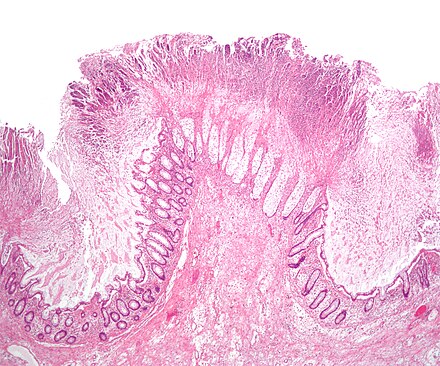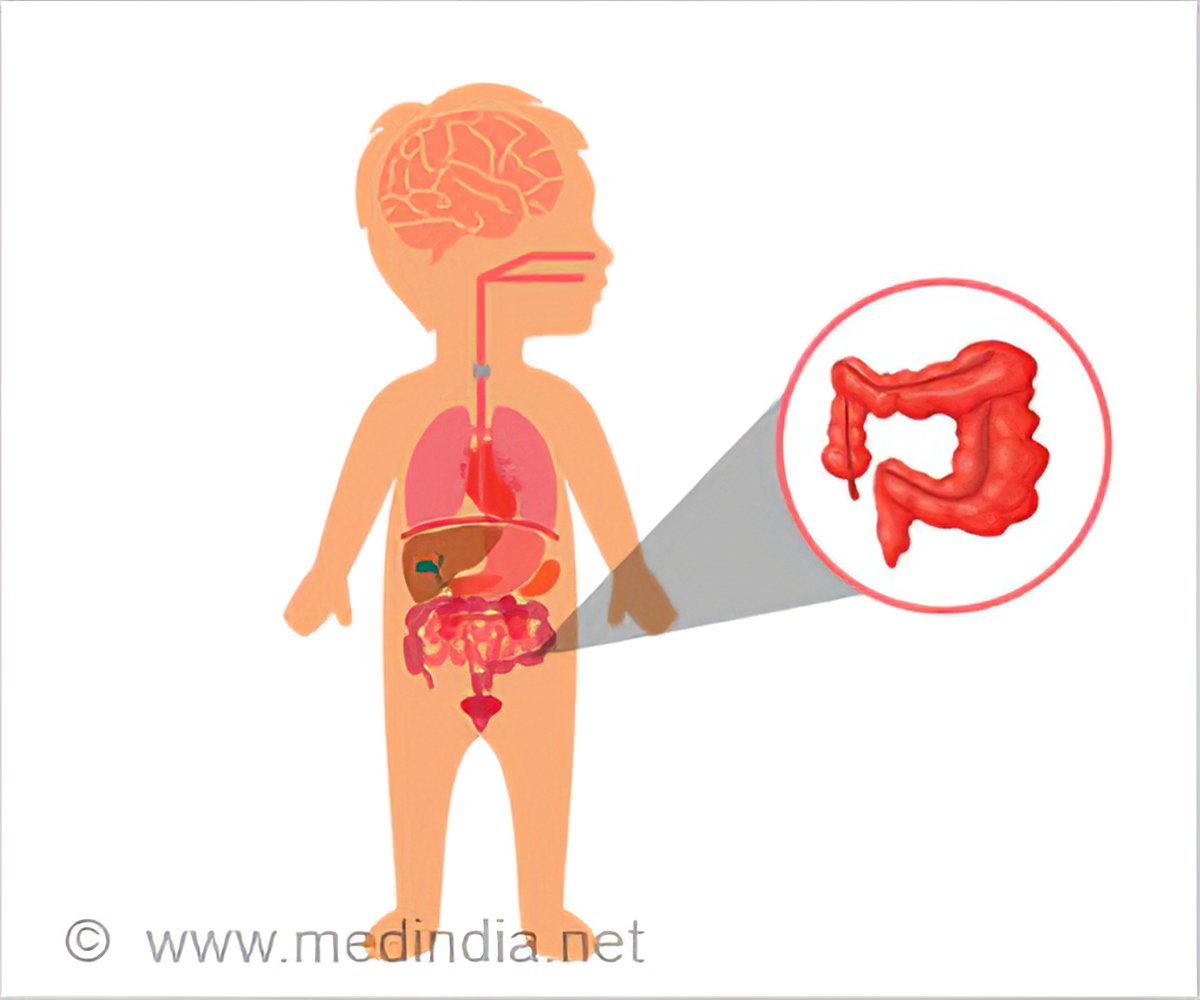pseudomembranous colitis in babies
Viscidi RP Bartlett JG. Ten cases of antibiotic-associated pseudomembranous colitis in children are reviewed.
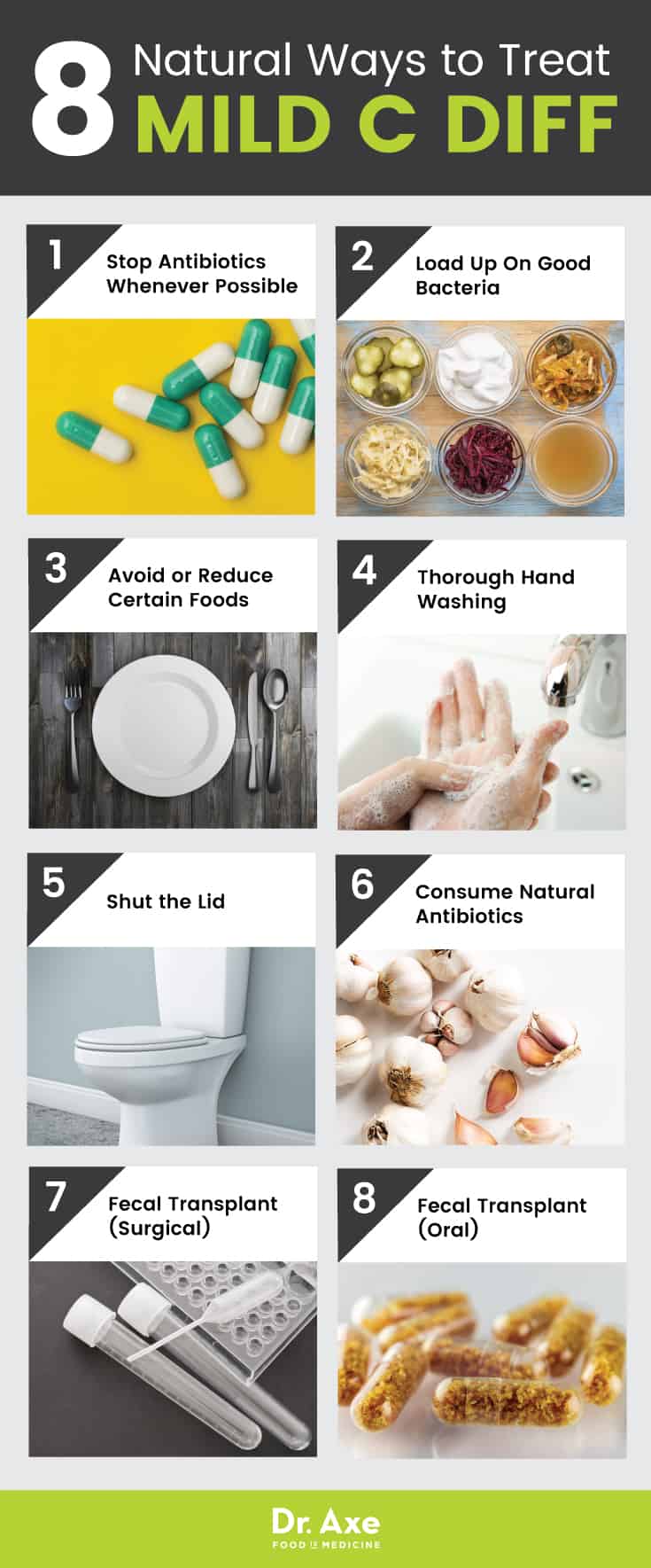
C Diff Infection Causes Symptoms 8 Natural Treatments Dr Axe
Stool assays showed specimens from all ten patients yielded a c.

. PMC is commonly associated with prior antibiotic exposure and hospitalization. It is most often seen in people who are in the hospital. The natural occurrence of new more-aggressive strains of C.
Pseudomembranous colitis remains a potentially lethal complication of antibiotic usage. Pseudomembranous colitis is uncommon in children and rare in infants. Oral metronidazole 400mg 10mgkg 8 hourly for 10 days can be given IV Severe.
Pseudomembranous SOO-doe-mem-bruh-nus colitis also called antibiotic-associated colitis or C. Symptoms of pseudomembranous colitis include. Pseudomembranous colitis severe inflammation of the inner lining of the bowel from C.
Pseudomembranous colitis PMC is inflammation in your colon that happens when theres too much of certain bacteria in your system. Rietra PJ Slaterus KW Zanen HC Meuwissen SG. With each recurrence your chance of having an additional recurrence increases.
Oral vancomycin 125mg 3mgkg 6 hourly for 10 days IV not effective Hand hygeine ie. Pseudomembranous colitis in children. Pseudomembranous colitis PMC occurs rarely in children but its incidences are increasing due to frequent antibiotic use.
The most frequently implicated antimicrobial agents were penicillins in six children and clindamycin in two. And nursing homes those who receive tube feeding and those with suppressed immune systems. Antibiotic-associated colitis is a rare complication of antimicrobial therapy in children.
To alert about the pseudomembranous colitis in children a consequence of the use of antibiotics. We report a 14-month-old girl who presented with rectal prolapse complicated with. Clostridial toxin in faeces of healthy infants.
Pseudomembranous colitis is an inflammatory condition of the colon characterized by elevated yellow-white plaques that coalesce to form pseudomembranes on the mucosa. Stool assays showed specimens from all ten patients yielded a cytopathic toxin which was neutralized by Clostridium sordellii. Ten cases of antibiotic-associated pseudomembranous colitis in children are reviewed.
Jayakar AV Desai AG Dalal NJ Shah SC Narayan K. The most frequently implicated antimicrobial agents were penicillins in six children and clindamycin in two. 8586 Infants and young children rarely are affected.
However it is becoming more common in people who take antibiotics and are not in a hospital. Frequent watery diarrhea that is sometimes bloody. Pseudomembranous colitis was originally reported at autopsy before antibiotics became available.
Links to PubMed are also available for Selected References. 127 There are reports of C. Bolton RP Thomas DF.
Washing with soap and water is very important as it kills the spores. It is caused almost exclusively by toxins produced by Clostridium difficile. Identification of Clostridium difficile as the major pathogen has led to a rational successful approach to therapy and has widened the spectrum of associated disease.
This review presents the microbiology management and prevention of pseudomembranous colitis PMC in children. The clinical spectrum of this disease may range from a mild non-specific. There are limited descriptions of pseudomembranous colitis in children.
The most frequently implicated antimicrobial agents were penicillins in six children and clindamycin in two. 8586 Infants and young children rarely are affected. Pain and tenderness in the stomach.
Difficile was recovered from the stool. In more severe cases sepsis the bodys potentially dangerous overreaction to an infection can occur. Difficile the causative agent in 90 to 99 of pseudomembranous colitis cases is a.
This diagnosis should be suspected in any child with significant diarrhea during or after a course of antimicrobial. Difficile infection is uncommon in children. The ages ranged from 4 years to 17 years.
Antibiotic-associated pseudomembranous colitis in children. Pseudomembranous colitis in children and adults. It is caused almost exclusively by toxins produced by Clostridium difficile.
Toxic megacolon can occur as a complication of. This report is the result of the clinical follow-up of a patient with chronic diarrhea after the use of several antibiotics. This review presents the microbiology management and prevention of pseudomembranous colitis PMC in children.
We investigated the incidence and clinical characteristics of. The ages ranged from 4 years to 17 years. Ampicillin penicillin and clindamycin are the drugs most frequently reported to cause pseudomembranous colitis in pediatric patients.
Get a printable copy PDF file of the complete article 295K or click on a page image below to browse page by page. Clostridium difficile and the aetiology of pseudomembranous colitis. The clinical spectrum of this disease may range from a mild non-specific.
Full text Full text is available as a scanned copy of the original print version. It is commonly isolated from stool samples of children but has been associated with infections in different systems and bacteremia. This preterm female infant abruptly developed diarrhea and bowel distention at 25 days of age and died within 60 h with fulminating pseudomembranous colitis and proctitis.
Difficile which are more resistant to antibiotics has made treating pseudomembranous colitis increasingly difficult and recurrences more common. PMC is commonly associated with prior antibiotic exposure and hospitalization. There are limited descriptions of pseudomembranous colitis in children.
Treating recurring pseudomembranous colitis. Use of medicines that weaken the immune system such as chemotherapy medicines. Pseudomembranous colitis after short-course antibiotics is rare in children.
The pseudomembranous colitis developed 12 days after the last dose of ampicillin was given to the baby. Approach to diarrhea in children in resource-rich countriessystemic toxicity.
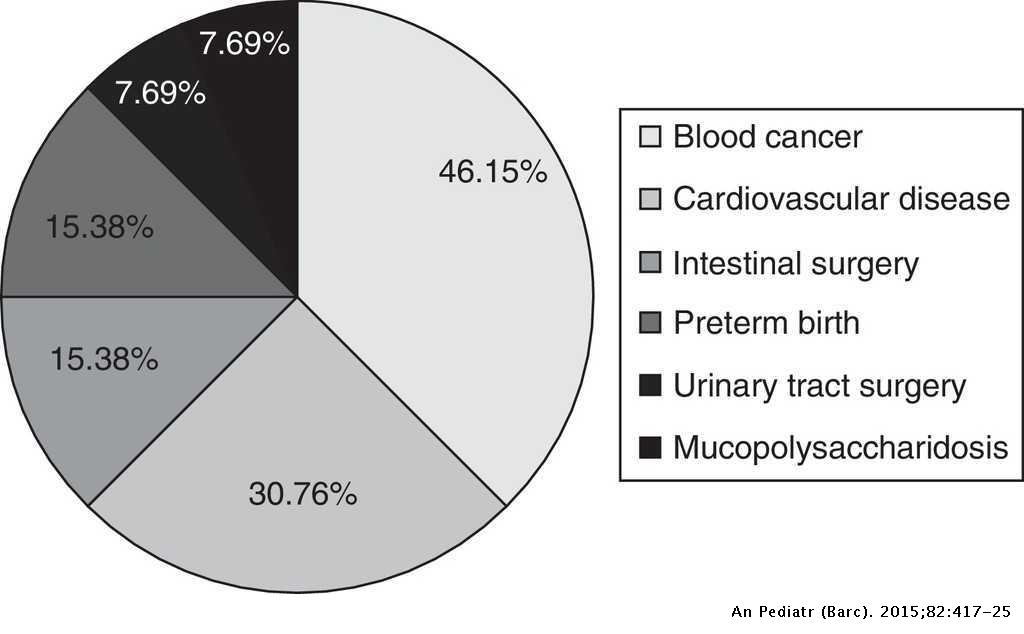
Clostridium Difficile Isolation In Children Hospitalized With Diarrhoea Anales De Pediatria

Baby With White Plaques On The Tongue Consultant360

Welcome To The Infant Botulism Treatment And Prevention Program

Clostridium Difficile Associated Diarrhea American Family Physician

Lactobacillus Reuteri Dsm 17938 In The Prevention Of Antibiotic Associated Diarrhoea In Children A Randomized Clinical Trial Clinical Microbiology And Infection
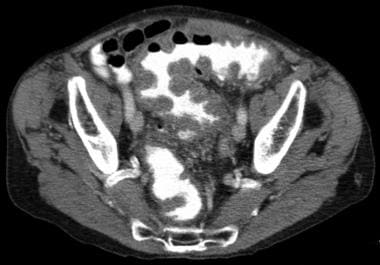
Clostridioides Clostridium Difficile Colitis Workup Approach Considerations Stool Examination And Stool Assays Endoscopy
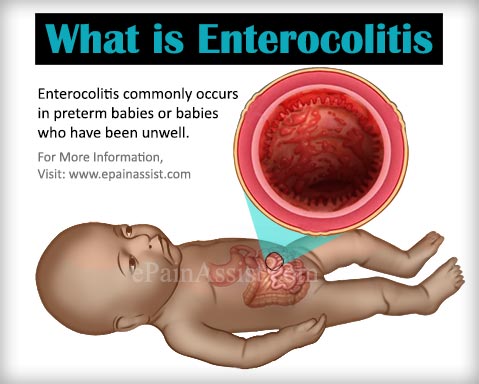
What Is Enterocolitis Causes Symptoms Treatment Diet
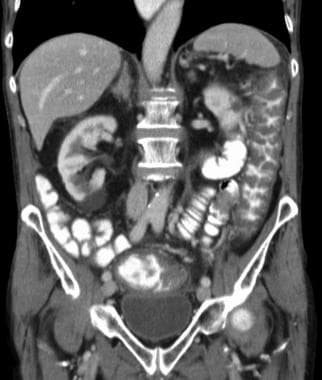
Clostridioides Clostridium Difficile Colitis Workup Approach Considerations Stool Examination And Stool Assays Endoscopy

Irritable Bowel Disease Colitis Pseudomembranous Colitis
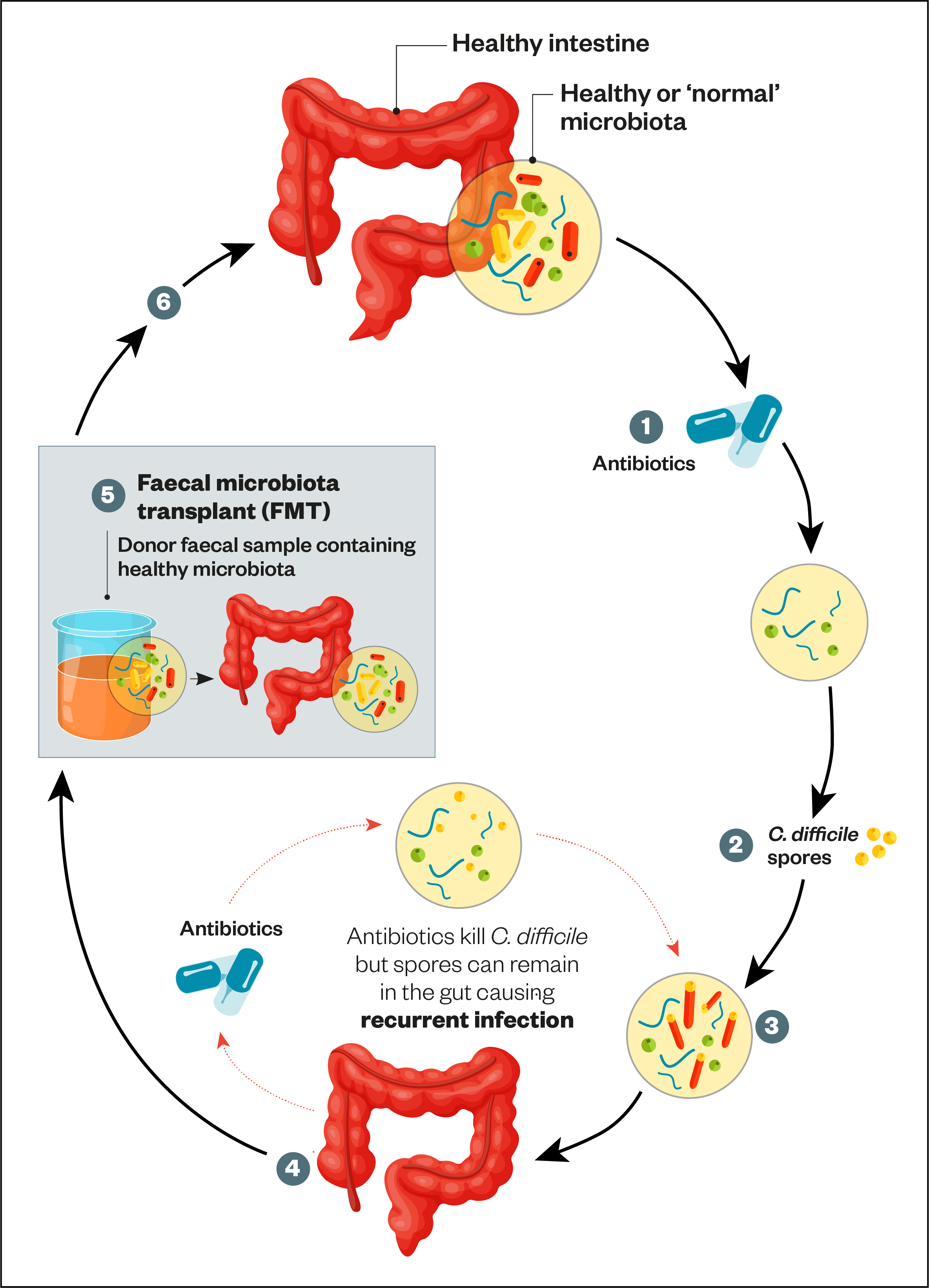
Clostridioides Difficile Infection Management The Pharmaceutical Journal

Clostridium Difficile C Diff Infectious Dis Medbullets Step 2 3
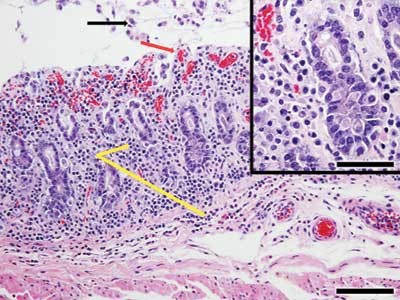
Diagnosis Clostridium Difficile Induced Typhlitis And Colitis Lab Animal

Clostridium Difficile Pha Infection Control

Clostridium Difficile Infection What You Need To Know Consultant360


